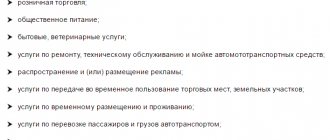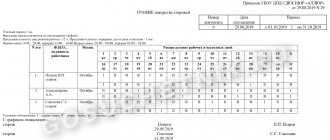Do you have doubts about the choice of tax regime?
We will help you choose the optimal mode for your business and OKVED
Get a free consultation
The difference between these two systems is the object of taxation.
In one case, the simplified tax system is taxed on all revenue at a rate of 6%, and in the other, only the difference between income and expenses at a rate of 15%.
We are talking about generally accepted simplified tax rates of 6% or 15%, but in the regions they may be lower for certain types of activities if local authorities have issued the relevant regulations.
Therefore, before you start making calculations and decide which type of simplification to choose, take an interest in the rates that apply to you.
Also, when choosing, take into account the fact that it will be possible to change the object of taxation only from the beginning of the calendar year by sending an application to the Federal Tax Service.
Information about the simplified tax system
The simplified form can be used by companies that meet the following conditions:
- Total income for the year does not exceed 64 million rubles;
- The average number of employees is less than one hundred people;
- The company's fixed assets cost no more than one hundred million rubles.
There are several types of activities in which you cannot use the simplified form, even if the company fully complies with the above conditions. But most activities can use the simplification without problems.
Simplified language can be used by both organizations and individual entrepreneurs. The procedure for using it is almost the same for them. The only differences are in paying the final tax amount for the year and submitting tax reports. Entrepreneurs do this on April 30, and legal entities on March 31.
When using the simplified tax system, the taxpayer has the right to independently choose the tax rate: 6% or 15%. This should be chosen carefully as it cannot be changed until the end of the tax year.
Options for the object of taxation
If you decide to switch to a simplified system starting in the new year or are already applying the simplified tax system and are thinking about changing the object of taxation starting next year, then a decision on this must be made before the end of the current tax period. No later than December 31 of the year preceding the start of application of the simplification, a notification must be sent to the inspectorate, respectively:
- on the transition to the simplified tax system (clause 1 of article 346.13 of the Tax Code of the Russian Federation);
- changing the object of taxation (clause 2 of article 346.14 of the Tax Code of the Russian Federation).
In both cases, the key question is the choice of the object of taxation: “income” or “income minus expenses.” After all, the tax burden under this special regime directly depends on it.
Read more about the procedure for notifying tax authorities about the transition to using the simplified tax system in this article .
For information on how to change the object of taxation, read the article “The procedure for changing the object of taxation under the simplified tax system “income”” .
Important! ConsultantPlus warns Once you start using a new object, you need to follow certain rules in tax accounting. They depend on…(read more in K+).
Object “income” - 6%
When choosing such a rate, the simplifier takes into account only income (operating and non-operating). Expenses do not affect the tax amount in any way. In other words:
tax = income * 6%.
The tax on this tax base can be reduced by the following amounts:
- Payments made to extra-budgetary funds;
- Paid benefits for temporary disability;
- Payments for employee insurance.
Such payments can reduce the tax amount by up to 50%.
A simplified entrepreneur who carries out his activities without employees can reduce the tax due to insurance contributions by 100%.
Features of choice
When considering whether to start using the simplified tax system, it is important to take into account many factors, not just the established tax rate. The first is to whom it is planned to sell products or provide services.
If the consumers are the population, i.e. citizens, or small organizations and individual entrepreneurs working on a simplified system, then the transition to the simplified tax system will not particularly affect relationships with counterparties and clients.
If you plan to interact with large companies that use OSNO, the transition to a simplified regime may have a negative impact on establishing relationships with them. By switching to the simplified tax system, the enterprise stops paying VAT, therefore, the burden of it will shift to consumers. In this case, it will be necessary to significantly reduce prices to compensate for VAT losses, or you will have to lose a large part of the clientele.
The second point is the choice of tax rate itself. In the simplified mode, two options are possible: 6 or 15 percent. Typically the choice is made as follows. When providing services or performing work, the rate is 6%, when trading – 15%.
If we rely on mathematical calculations, then working on a simplified tax system of 6% is more profitable for companies whose expenses are less than 60% of income. For a business whose expenses account for more than 60% of income, it is better to switch to the simplified tax system of 15%.
At first glance, there is nothing difficult in choosing, but the simplified tax system is not as simple as it seems!
Object “income-expenses” - 15%
By choosing this object of taxation, the taxpayer will pay a tax of 15% on the difference between revenue and costs. This taxation object is beneficial for those who have constant documented expenses.
If a company decides to choose this particular tax rate, it needs to take into account that expenses can only be taken into account when forming the tax base of the simplified tax system if all the conditions are met:
- The expense incurred is necessary to carry out the activity;
- Costs must be listed in the Tax Code;
- Payment has been made and this is proven by documents. If the payment was made in cash, the supporting document will be a cash receipt, and if paying by bank transfer - a payment order;
- The item of expenditure has been received, and this is documented. When purchasing materials and goods, the supporting document will be an invoice, and when receiving services - a certificate.
If the company does not have the necessary documents, the expense cannot be taken into account when forming the tax base. It must be taken into account that receipts are not confirmation of payment of the expense, and the contract is not the subject of the expense.
How to address the risks associated with cost recognition
We must not forget that the simplified taxation system “Income minus expenses” is associated with more complex accounting and additional risks.
There is always a possibility that counterparties will not provide the necessary documents on time, or that the tax authorities will not accept certain expenses based on the results of the audit.
Therefore, if calculations show that the benefits from using both options are approximately the same, then it is better to choose the simplified taxation system “Income” in order to simplify accounting and reduce risks.
Choose between 6% and 15%
A universal selection rule: if a company is engaged in the provision of services, it applies a rate of 6%, and if it trades - 15%.
Using simple mathematics, it is not difficult to understand that:
- If the organization’s costs account for more than 60% of revenue, it is more profitable to use a rate of 15%;
- If the company's costs are less than 60% of revenue, it is more profitable to apply a rate of 6%.
It is not difficult to guess that the tax authorities are interested in ensuring that the tax base is high and not underestimated. Taxpayers, on the contrary, want to achieve the smallest possible tax base.
Taking this into account, the simplified object “income” (6%) may turn out to be more profitable due to:
- Ease of determining the tax base. Since this tax is paid only on officially received income, there is no need to deduct expenses.
- Low tax risks. The tax office will pay attention only to income, since only they are the tax base. The inspection will not be interested in costs.
- Fewer documents required for confirmation (only income needs to be confirmed, there is no need to confirm expenses).
With the “income-expenses” object (15%), everything is different. It refers to a special tax regime, but it would be more correct to compare it with the general taxation system, and not with the simplified object “income”.
The advantage of the simplified “income-expenses” object compared to OSNO is the smaller turnover of documents. When using both modes, you will have to document all expenses incurred, but when using the simplified method, this requires much less documents.
What else needs to be taken into account in calculations in 2018
In addition to the interest rate under the simplified tax system, an entrepreneur is required to make contributions to pension and health insurance accounts, at least for himself. In addition, with high income, an additional tax may be assessed on the enterprise, designed to increase contributions to the budget.
These contributions must be taken into account when calculating both the 6 and 15% rates under the simplified tax system.
Fixed contributions
It is worth remembering that in addition to taxes, an entrepreneur is required to pay contributions for pension and health insurance for the year. They do not depend on the level of income and expenses, but are fixed by a decision of the Government of the Russian Federation.
According to Law No. 337-FZ of November 27, 2017, from January 1, 2021, the minimum entrepreneur is required to pay annual contributions in the following amount:
- OPS (compulsory pension insurance): 26,545 rubles.
- insurance (compulsory health insurance): 5840 rubles.
In total, the entrepreneur must pay 32,385 rubles for himself in 2021. In addition, for each employee you also need to pay contributions (including compulsory health insurance and compulsory medical insurance), which the employer is obliged to provide to the hired employee.
Remember that this money can be deducted from tax at a rate of 6%. This amount is also included when calculating the contribution at a rate of 15%, subtracting it from income along with other expenses.
Additional fees
If the entrepreneur’s income exceeds 300 thousand rubles, then another 1% of the amount exceeding this limit will have to be added to the OPS. That is, with 1.5 million earned you will have to pay more:
(1500000 - 300000) * 1% = 12000 rubles.
This amount is added to the fixed contribution and taken into account in the same way when calculating tax at rates of 6 and 15%.
conclusions
In general, it is most profitable to pay UTII. But not all types of activities can use this mode. Between OSNO and simplified tax system, 15% choose the simplified version.
If a company's costs are 60% less than its income, it is more profitable for it to choose a rate of 15%, and if it is 60% more - 6%. In addition to the low simplified tax rate of 6%, compared to the simplified tax system of 15%, its advantage is that you do not need to keep track of expenses. This means that accounting costs become much lower. Tax risks that are associated with incorrect interpretation of costs and the need to prove the legality of each expense made are also reduced.
Based on the article, we can draw the following conclusion: you can determine what rate will be beneficial for your organization only by taking into account the specifics of your activity and assessing the profitability of the business.
To make the best choice, it is best to contact a consulting organization. Specialists with extensive experience in this matter will help you make the right choice and provide the most profitable option, clearly justifying your position.
Similar articles
- Calculation of transport tax (accounting entries)
- Can an LLC choose a simplified taxation system?
- Rules for calculating the minimum tax under the simplified tax system
- How to reduce the simplified tax system on insurance premiums?
- USN: rates
Six or fifteen?
So, what is the most profitable interest rate under the simplified tax system? How to calculate and not make a mistake? After all, you can only change it once a year. And if you make a mistake, you will have to overpay for the next 12 months. But an exact answer cannot be given.
There is no 100% benefit from one percent or another - everything depends only on the income and expenses of an individual enterprise.
For each company, a separate calculation of the amount that needs to be paid to the tax office is required. And based on the calculations, decide what percentage will allow you to save an extra penny on payments to the budget.
How to calculate which bet is more profitable
When choosing a tax rate according to the simplified tax system, you must remember that the final amount is affected not only by the percentage chosen by the entrepreneur, but also by:
- fixed fees;
- additional contributions for entrepreneurs with income over 300 thousand rubles;
- ratio of income to expenses.
The higher the level of profitability, the more profitable it is to use a 6% rate. If expenses “bite off” a significant portion of the overall earnings (60% and above), then it is better to stop at 15%. But only on the condition that after deducting additional and mandatory contributions, the amount still remains profitable. Let's look at two examples.
Tax from 1.5 million rubles. with simplified tax system 6% – 90,000 rubles. But it is worth remembering that from these 90 thousand, the entrepreneur has the right to deduct fixed (32,385 rubles) and additional contributions (12,000 rubles). Therefore, the amount will be slightly different.
90000 - 32385 - 12000 = 45615 rubles.
This is the final tax that an entrepreneur without employees with an income of 1.5 million rubles will have to pay. If he has hired employees, and he paid any contributions for them (insurance, sick leave, etc.), then the minimum tax will be 22,807.5 rubles. But only on the condition that during the reporting period it was necessary to pay 50% of the tax to employees, which depends on the size of the state.
But from the same 1.5 million rubles. with simplified tax system 15% with expenses of 1 million rubles. (66.7% of income) it will already be 75 thousand. But this amount was calculated without taking into account fixed and additional contributions for compulsory health insurance and compulsory health insurance, so it must be recalculated:
(1500000 - 1000000 - 32385 - 12000) * 15% = 68342.25 rubles.
And then 15% suddenly stopped being so profitable. Recalculation taking into account contributions shows that you will have to overpay 20 thousand more than with the simplified tax system of 6%.
But if the expense from 1 million rubles grows to 1.2 million rubles (80% of income), then the picture will be different:
(1500000 - 1200000 - 32385 - 12000) * 15% = 38342.25 rubles.
Once again, 15% becomes more profitable than 6%.
Consequently, the greater the percentage of expenses in relation to income, the more profitable it is to use the “income minus expenses” system.
Before choosing a tax rate, you need to predict the approximate percentage of expenses to income in order to calculate the benefit.
What else is worth considering when choosing a bet?
In addition to standard calculations, it is also necessary to take into account other, rarer factors that do not apply to all entrepreneurs. They may depend on the size of the company, the scope of activity and the “cleanliness” of accounting:
- Number of employees and potential insurance premiums for them. The more employees you have, the higher the contributions will be, and the more you can reduce the tax at the 6% rate (but not more than 50% of its amount).
- The need to pay a trading fee - this can also be included in expenses when calculating a 15% rate or deducted from the total amount at a 6% rate.
- Availability of documents for all expenses - necessary to confirm the level of expenses).
- Was there a loss for the last tax period under the simplified tax system of 15% (based on the results of the current year, you can reduce the amount of income by the amount of the loss for the previous year).
- Fluctuations in the tax rate depending on the region (from 1 to 6% for “income” and from 5 to 15% for “income minus expenses”).
Depending on these factors, the calculation process may need to be adjusted slightly. For example, subtract some unproven expenses or add the amount of the trading fee. Or reduce income for the year, taking into account last year’s loss.
Summary calculation of the total tax burden
| SNO /Indicator | General | General with VAT exemption | simplified tax system "income" | Simplified tax system “income minus expenses” | Patent |
| Insurance premiums, total | 141 472,93 | 144 139,60 | 158 139,60 | 158 139,60 | 158 139,60 |
| including: per employee | 95 265,60 | 95 265,60 | 95 265,60 | 95 265,60 | 95 265,60 |
| fixed "for yourself" | 40 874,00 | 40 874,00 | 40 874,00 | 40 874,00 | 40 874,00 |
| variable part "for yourself" | 5 333,33 | 8 000,00 | 22 000,00 | 22 000,00 | 22 000,00 |
| VAT | 266 667 | 0 | 0 | 0 | 0 |
| Base for basic tax | 833 333 | 1 100 000 | 2 500 000 | 1 200 000 | 1 980 000 |
| Basic tax rate* | 13 % | 13 % | 6 % | 15 % | 6 % |
| Basic tax | 108 333 | 143 000 | 150 000 | 180 000 | 118 800 |
| Basic tax payable | 108 333 | 143 000 | 75 000 | 180 000 | 59 400 |
| Total tax burden | 516 472,93 | 287 139,60 | 233 139,60 | 338 139,60 | 217 539,60 |
* The example considers an individual entrepreneur, so the main tax under OSNO is personal income tax at a rate of 13%. For an organization, this would be an income tax at a rate of 20%.
In the example, it turned out that the most profitable taxation system for individual entrepreneurs is a patent. All thanks to the new rules that allowed tax deductions. Slightly less profitable is the simplified tax system “income”. OSNO with exemption from VAT and simplified tax system “income minus expenses” are even less profitable. With the “classic” OSNO, the tax burden is more than 2 times greater than in the most profitable option.





